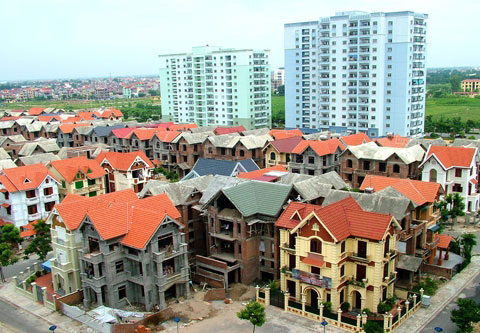Credit transfer to home buyers, the trend of sustainable development
(DTCK) Credit outstanding in the real estate sector in the first five months of this year has slowed down compared to 2016. However, the good news is that credit growth is tending to shift to loan repairs. buy house.
A report by the National Financial Supervisory Board showed that by May 2017, credit grew by 6.8% compared to the end of 2016 (5.7% in the same period of 2016).
In particular, term credit structure changes in the direction of reducing the proportion of long-term credit. It is estimated that the proportion of short-term credit is 45.4% (end of 2016 is 44.9%), the proportion of medium and long term credit is reduced to 54.6% (end of 2016 is 55.1%).
In terms of consumer lending, tends to grow at a slower rate of 29.7% compared to wedding in 2016, of which residential mortgage and home purchase loans rose by 38.4% compared to weddings in 2016, Accounting for 52.8% of total consumer credit.
In 2016, consumer credit is expected to increase 39% from the end of 2015, accounting for 11.4% of total credit (9.8% in 2015). Of which, 49.5% of consumer credit focused on loans for home repairs, home purchases, and repayment of loans by borrowers, according to the National Financial Supervisory Commission.
Talking to Real Estate Investment Newspaper, a bank leader in the South, it is not uncommon for homeowners to take credit for home repairs and home improvements at current rates. The reasonable level, while real estate prices are still stable, so many people need to buy a house.
In addition, a number of past-time concessional credit programs that have been introduced in homeownership programs, such as 0% interest rates or interest rate subsidies, have also prompted residents to accumulate property, Especially for those with real needs.
In fact, before the need to be cautious with credit risk control for the real estate sector, over the past time, banks mainly focused on segment lending to individuals with capital needs. home.
A bank leader HDBannk said that the payment is quite selective and always in accordance with the regulations of the State Bank lending. However, the more concentrated customer segment is still for individual buyers, especially for those with which the bank is affiliated. Outstanding mortgage loans at HDBank now account for 10-15% of total outstanding loans of individuals.
Similarly, microcredit also lends, although the lending room for the real estate sector of the Bank is still old, but the policy of Vietcombank is focused solely on promoting individual customers with demand for Housing, real estate business loans. At the same time, the Bank has no policy to provide credit to project investors. Personal loans for home loans are also only implemented in projects where the Bank is linked, the projects have very good output, to limit the risk of bad debt.
Nguyen Thu Hang, deputy director of research department of Savills Vietnam, said that the real estate market is expected to focus strongly on the segment of houses and apartments. For the middle class.




